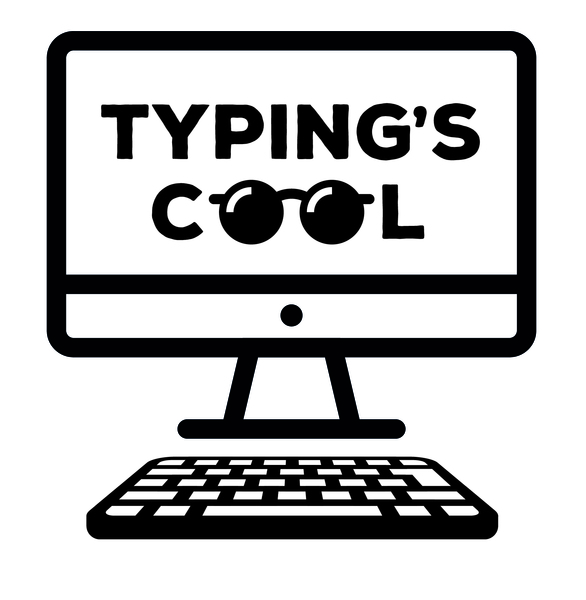Why is learning to touch type important?
Most people get by hunting and pecking their way around the keyboard using 2 - 3 fingers. Formal touch typing uses all the fingers and thumbs to type automatically without having to keep looking down at the keyboard. Around 10% of the population has a dyslexia or hand writing related learning difficulty so touch typing can really make a big difference to these learners.
We aim to teach to 25+ words per minute so that using a lap top will always be more efficient than hand writing.
Work can be edited, ideas explored and developed effortlessly and the writer achieves more impact. Touch typing really is the shortest distance between a thought and the written page.
What about posture, repetitive strain injury etc?
Around 50% of young people are beginning to experience back problems by the age of 16 due to the use of lap tops, tablets and other devices. Using all ten fingers and thumbs, wrists and arms in a correct posture, distributes the effort of typing so it is less tiring and so less potentially harmful in the long term.
Should my child practise or learn at home?
Practising for 10 - 15 minutes each day between lessons will reinforce and accelerate learning.
What is the best age to learn?
We teach learners 8 - 18s but we believe the best time to learn is between Year 4 and Year 9. Having said this, we have many successful Year 3 learners who are better than older children so learning so there is no right age.
Do children in your clubs have special educational needs?
Around a quarter of our learners have hand writing issues. Most learners attend because their parents recognise that today's world is becoming increasingly digital.
Is the use of the computer keyboard being superceded by voice recognition software?
It is actually much faster to type than to speak. In a world where learners will be increasingly expected to learn computer code, typing a string of letters, symbols and numbers is always going to be faster than speaking. A number of our pupils attend because they want to be faster coders.
What else do you do in your touch typing clubs and courses?
Our approach is based on precision teaching which aims to retain knowledge and skills in the long term memory. Taxi drivers have denser brain matter in the visual processing area of the brain as they "hardwire" the "knowledge".. Similarly artists, musicians and even footballers have also shown to have much more electrical activity going on in this part of the brain using MRI scans.
Our positive coaching promotes success and a can-do growth mind-set.
What happens in a Typing's Cool holiday club?
We have adapted lots of youth work games that get learners mixing up and getting to know each other while playing fun games that promote fine and gross motor skills such as Chinese Typing, Simon Types, Keyboard Boggle and the typing chocolate challenge. There is a 15 minute break mid session when we provide fruit juice and biscuits. Water is available throughout the sessions.
